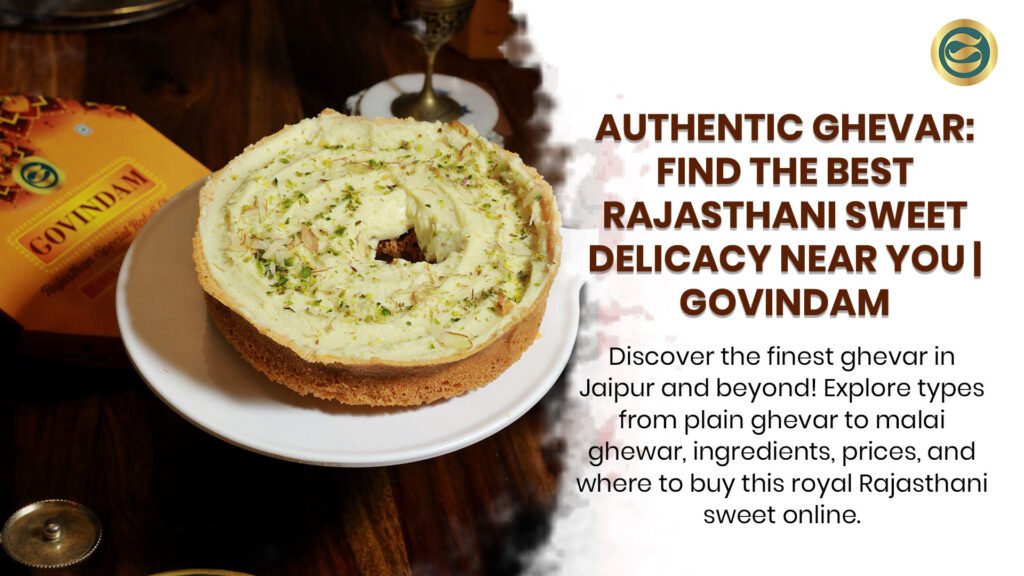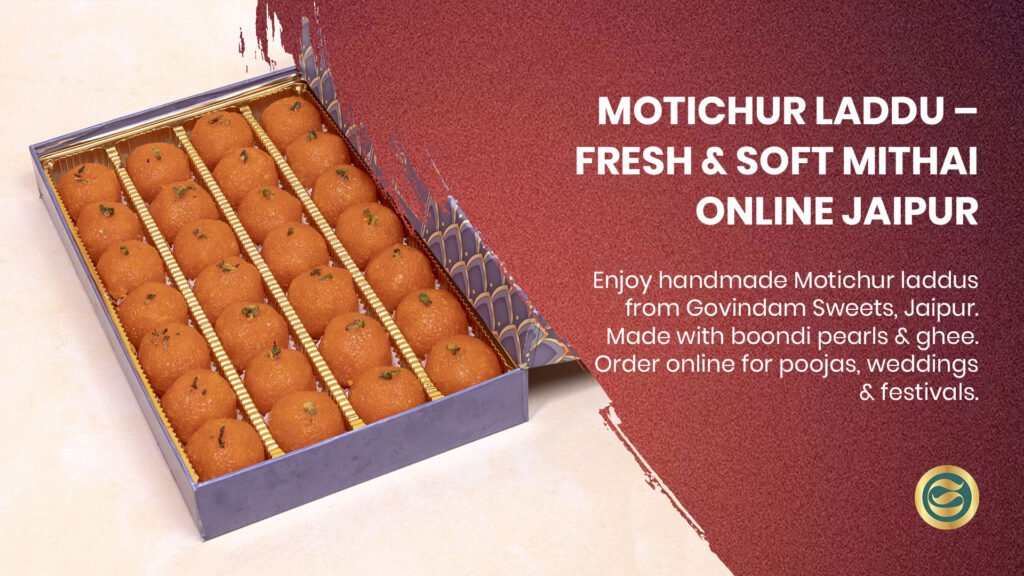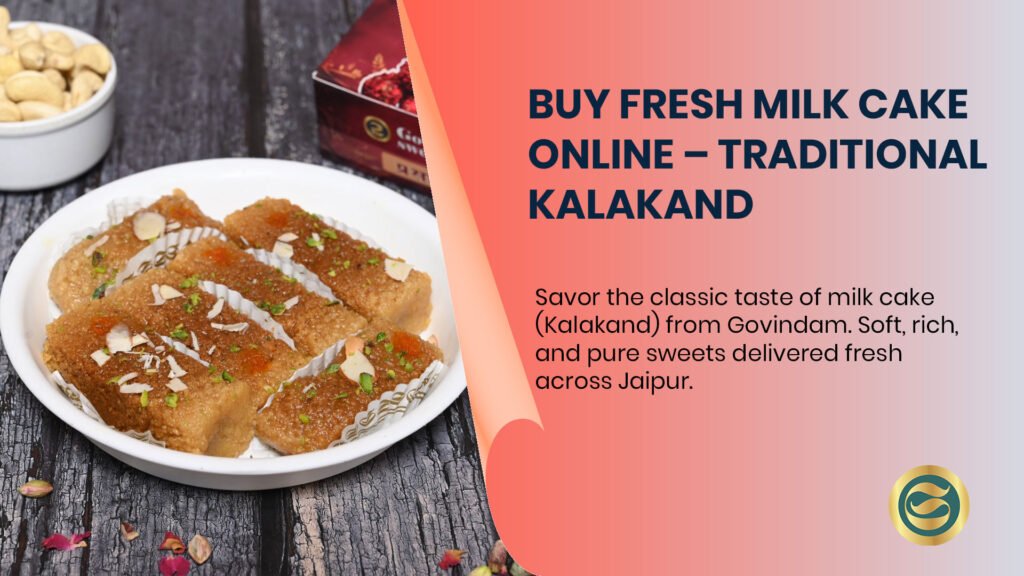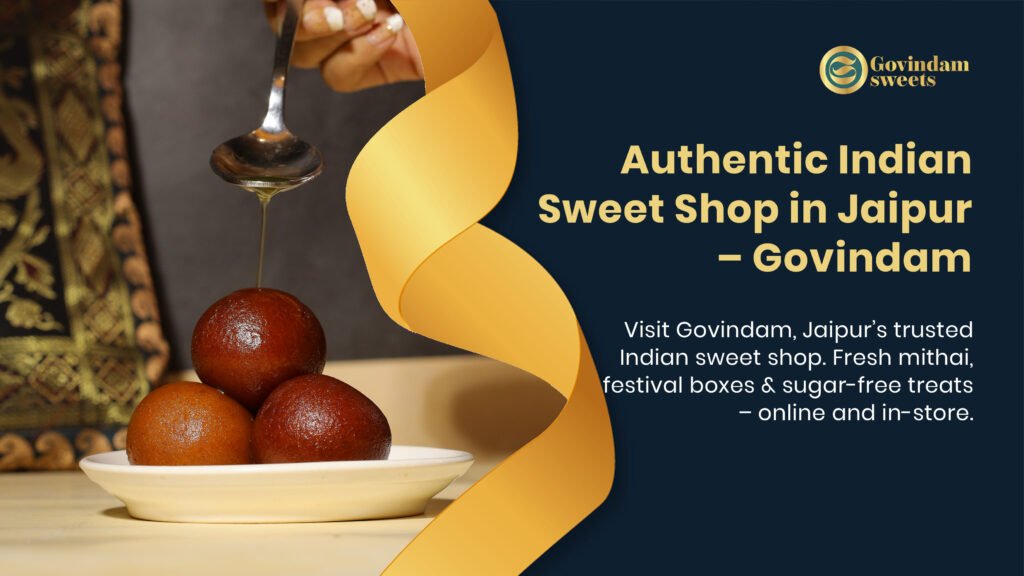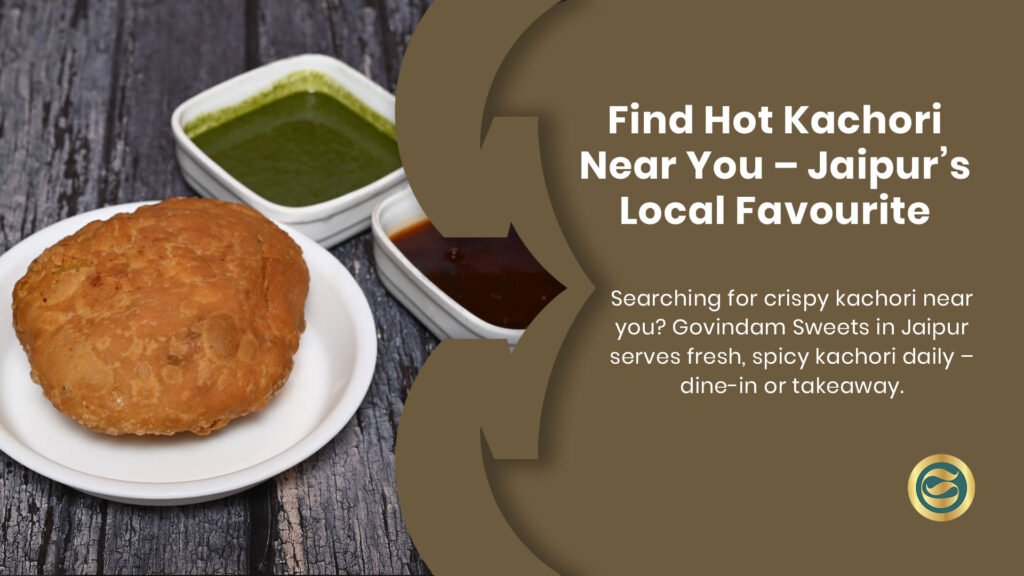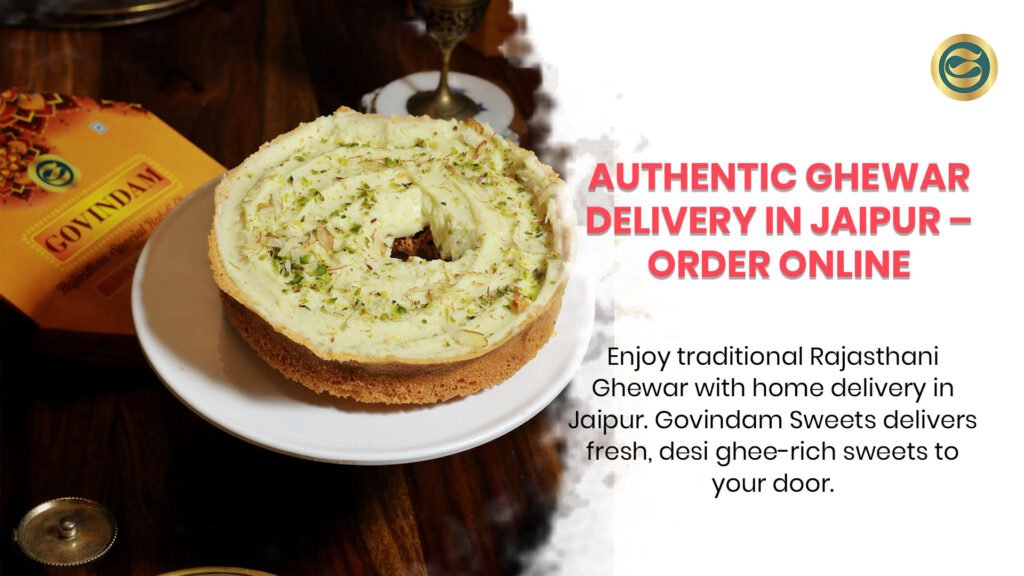Discover Top 10 Rajasthani Sweets Culinary Journey Heritage India
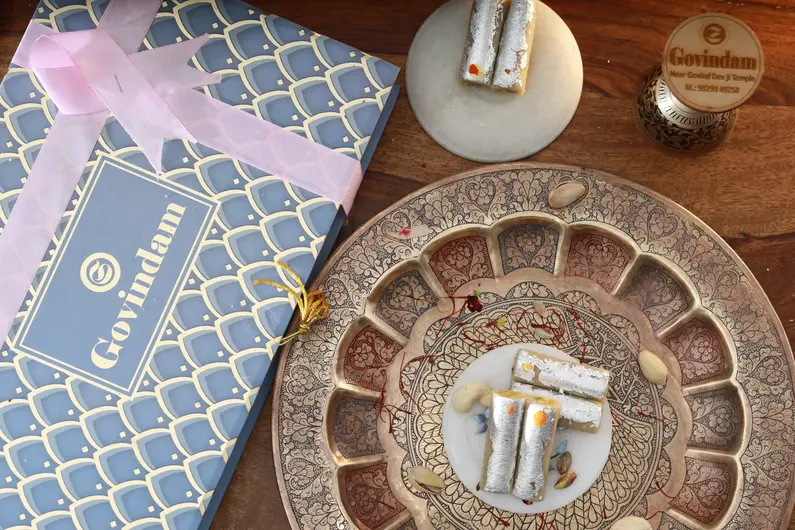
Discover the top 10 Rajasthani sweets representing desert state’s rich culinary heritage including Ghewar, Balwan Laddu, Mawa Kachori, Mohanthal, and more. Explore preparation methods, cultural significance, flavor profiles, and occasions for each traditional sweet. Learn where to experience authentic Rajasthani confections online with nationwide delivery.
Discover the Top 10 Rajasthani Sweets: A Culinary Journey
Introduction: Rajasthan’s Sweet Legacy in Desert Sands
The top 10 Rajasthani sweets represent a remarkable culinary achievement—creating elaborate, sophisticated confections in one of India’s most challenging environments where water scarcity, extreme temperatures, and limited agricultural diversity could have resulted in minimal sweet-making traditions. Instead, Rajasthani ingenuity transformed these constraints into opportunities, developing unique preparation techniques using ghee as primary medium, creating shelf-stable products through sugar preservation, and crafting distinctive flavors and textures that distinguish Rajasthani sweets from other regional Indian confectionery traditions. These desert-adapted innovations combined with royal patronage from Rajput courts, religious festival traditions, and centuries of artisanal refinement created the magnificent sweet heritage that contemporary Rajasthan proudly maintains.
Understanding the top 10 Rajasthani sweets requires appreciating how geography, history, culture, and culinary artistry intersect creating confections that transcend mere taste experiences to become cultural expressions and heritage statements. From the intricate honeycomb structure of Ghewar requiring specialized skills passed through generations, through the dense richness of Mohanthal showcasing ghee and gram flour mastery, to the surprising savory-sweet fusion of Mawa Kachori challenging conventional dessert boundaries, each sweet in the top 10 Rajasthani sweets tells stories about ingredient adaptation, preparation innovation, festival traditions, and regional identity that make Rajasthani cuisine fascinating beyond superficial gastronomic interest.
Govindam Sweets brings authentic Rajasthani sweet-making heritage to discerning consumers through our commitment to traditional preparation methods and quality ingredients. Shop now to explore our comprehensive collection featuring the top 10 Rajasthani sweets including our signature Ghewar varieties and renowned Balwan Laddu. This culinary journey through the top 10 Rajasthani sweets reveals the remarkable diversity, preparation sophistication, and cultural significance that make Rajasthani confectionery a treasured component of India’s vast culinary landscape deserving celebration, preservation, and continued appreciation across generations.
1. Ghewar: The Iconic Honeycomb Sweet
Preparation Complexity and Artistic Mastery
Ghewar stands undisputed as the most iconic entry among the top 10 Rajasthani sweets, recognized instantly by its distinctive honeycomb structure, circular disc shape, and syrup-soaked sweetness. The preparation technique represents remarkable culinary engineering—batter made from refined flour, ghee, and milk gets poured into hot ghee in concentric circles, with steam and precise pouring creating the characteristic perforated texture that distinguishes authentic Ghewar from crude imitations. This technique requires years of practice developing judgment about batter consistency, ghee temperature, pouring speed, and timing that cannot be learned from recipes alone but only through apprenticeship under master halwais.
The varieties within Ghewar’s place in the top 10 Rajasthani sweets span plain disc soaked in sugar syrup, mawa (khoya) Ghewar with milk solids layered between honeycomb layers, malai Ghewar topped with thick cream, and paneer Ghewar incorporating cottage cheese creating richer more substantial versions. Contemporary innovations include chocolate Ghewar, fruit-topped varieties, and fusion versions, though traditionalists consider plain Ghewar the authentic standard against which variations should be judged.
Cultural Significance and Festival Associations
Ghewar’s prominence in the top 10 Rajasthani sweets derives partly from deep cultural significance, particularly during Teej festival when this monsoon sweet becomes absolutely essential. The tradition of parents sending Ghewar to married daughters (Sinjara custom) makes Ghewar emotionally resonant beyond taste appeal, connecting to family bonds, seasonal celebrations, and gender-specific religious observances that give food profound cultural meaning. Weddings, religious ceremonies, and auspicious occasions all feature Ghewar prominently, with size and quality communicating celebration importance and family status.
2. Balwan Laddu: The Dense Nutritious Powerhouse
Ingredient Richness and Nutritional Profile
Balwan Laddu earns its position in the top 10 Rajasthani sweets through distinctive composition emphasizing nutritious ingredients—gram flour (besan), wheat flour, nuts, seeds, edible gum (gond), and generous ghee creating dense, rich laddus traditionally consumed for strength and energy. The name “Balwan” (strong/powerful) reflects nutritional reputation, with these laddus historically prepared for warriors, travelers, pregnant women, and anyone requiring sustained energy from calorie-dense portable food that withstands desert heat without spoilage.
The preparation method for Balwan Laddu in the top 10 Rajasthani sweets involves roasting flours in ghee until achieving proper color and aroma, frying gond until puffed, incorporating roasted nuts and seeds, binding with sugar syrup or jaggery, and hand-shaping into laddus while mixture remains workable. The skill lies in achieving proper roasting without burning, correct syrup consistency enabling binding without excessive hardness or inappropriate softness, and consistent shaping creating uniform attractive laddus demonstrating preparation care and artisan pride.
Traditional Uses and Contemporary Appreciation
Within the top 10 Rajasthani sweets, Balwan Laddu maintains particular relevance for traditional medicinal and nutritional purposes—postpartum nutrition for new mothers, winter warmth during cold desert nights, travel provisions for long journeys, and gifting to demonstrate concern for recipient health and wellbeing. These functional aspects distinguish Balwan Laddu from purely celebratory sweets, though it appears equally in festival offerings, wedding distributions, and religious ceremonies where its nutritional associations add auspiciousness.
3. Mawa Kachori: The Surprising Savory-Sweet Fusion
Unique Category Defiance
Mawa Kachori claims its place in the top 10 Rajasthani sweets despite technically being fried pastry rather than traditional sweet—demonstrating Rajasthani cuisine’s boundary-challenging creativity and category fluidity. The preparation involves refined flour pastry stuffed with sweetened khoya (mawa), nuts, and cardamom, deep-fried until golden and crispy, then dunked in sugar syrup creating extraordinary texture and flavor contrasts. The crispy shell yields to soft sweet filling, the fried savory notes balance sugar sweetness, and the temperature contrasts when consumed fresh create sensory experiences that straightforward sweets cannot replicate.
The inclusion of Mawa Kachori in the top 10 Rajasthani sweets reflects how Rajasthani cuisine embraces culinary innovation and refuses rigid categorization. While purists might question whether fried stuffed pastries belong among sweets, popular usage firmly places Mawa Kachori in dessert/sweet category rather than savory snacks, demonstrating how cultural practice and consumer perception ultimately determine food classifications more than technical definitions.
Preparation Challenges and Quality Indicators
Quality Mawa Kachori distinguishing itself within the top 10 Rajasthani sweets requires mastering multiple techniques—pastry dough achieving proper texture for rolling thin without tearing, stuffing consistency enabling neat enclosure without leaking, frying temperature and timing creating golden exterior without greasiness or undercooking, and syrup dunking providing sweetness without excessive absorption creating soggy results. Each technique requires skill and experience, making authentic Mawa Kachori restaurant or sweet shop specialty rather than home preparation staple.
4. Mohanthal: The Gram Flour Masterpiece
Besan Excellence and Ghee Generosity
Mohanthal secures its position in the top 10 Rajasthani sweets through masterful gram flour (besan) utilization creating dense, rich, grainy-smooth textured sweet that showcases this versatile ingredient’s potential. The preparation involves extensive besan roasting in generous ghee quantities until achieving proper color, aroma, and flavor development, then incorporating sugar, cardamom, saffron, and nuts before setting in flat trays and cutting into diamond shapes. The roasting process requires patience and vigilance—insufficient roasting produces raw flour taste, excessive roasting creates burnt bitterness, and proper roasting achieves nutty complexity that makes Mohanthal distinctive.
The ghee quantity in authentic Mohanthal among the top 10 Rajasthani sweets often shocks modern health-conscious consumers, yet this generosity serves essential functions—enabling proper besan roasting, creating characteristic texture and mouthfeel, acting as preservative extending shelf life, and providing authentic taste that reduced-fat versions cannot replicate. Traditional preparation prioritizes taste and authenticity over calorie consciousness, expecting consumption in moderate portions as special treat rather than regular dietary staple.
Regional Variations and Family Recipes
Within the top 10 Rajasthani sweets, Mohanthal demonstrates fascinating regional variations—Jaipur versions, Jodhpur preparations, Bikaner recipes—each claiming superiority through subtle differences in besan roasting degree, ghee quantity, sugar proportion, spice balance, or nut selection. Family recipes passed through generations maintain secret variations distinguishing one household’s Mohanthal from another, creating rich diversity within single sweet category that prevents monotony and enables endless comparison and preference debates among enthusiasts.
5. Churma Laddu: The Rustic Celebration
Agricultural Connection and Rural Heritage
Churma Laddu claims its place in the top 10 Rajasthani sweets through strong agricultural and rural heritage connections. Made from coarsely ground wheat or millet flour mixed with ghee, jaggery or sugar, and cardamom then shaped into rustic laddus, Churma represents peasant cuisine origins before royal court refinement. The preparation technique involves baking or frying dough pieces, grinding coarsely, mixing with ghee and sweetener, and shaping—relatively simple compared to elaborate Ghewar or Mawa Kachori but producing satisfying results from minimal ingredients demonstrating how culinary artistry doesn’t always require complexity.
The association with Dal Baati Churma—Rajasthan’s iconic savory meal where Churma provides sweet counterpoint to spicy dal and baked baati—demonstrates the top 10 Rajasthani sweets’ connections to broader cuisine and meal structures rather than existing as isolated dessert category. Churma Laddu represents portable packaged version of loose Churma powder, enabling convenient consumption, gifting, and travel that loose powder doesn’t facilitate.
Festival Importance and Religious Offerings
Within the top 10 Rajasthani sweets, Churma Laddu maintains particular importance in religious offerings and festival distributions where its agricultural ingredient associations, rustic authenticity, and traditional preparation methods carry symbolic weight that more refined sophisticated sweets might lack. The jaggery versions particularly appeal for religious contexts given traditional preference for jaggery over refined sugar in ritual foods, though sugar versions increasingly dominate commercial production responding to contemporary taste preferences.
6. Dilkhushal: The Intricate Fried Spiral
Architectural Precision and Visual Appeal
Dilkhushal earns its position in the top 10 Rajasthani sweets through distinctive spiral shape and intricate appearance demonstrating culinary artistry transcending mere taste. The preparation involves squeezing batter through special mold into hot ghee in concentric circular or spiral patterns, frying until golden, then soaking in sugar syrup. The visual appeal—delicate spirals catching light, symmetrical patterns, golden color contrasts with syrup glaze—makes Dilkhushal particularly suitable for festive displays, wedding presentations, and gift boxes where appearance matters alongside taste.
The technique for Dilkhushal within the top 10 Rajasthani sweets requires steady hand control, consistent batter consistency, proper mold selection, temperature management preventing burning or undercooking, and timing judgment determining optimal crispness before syrup soaking. These skill requirements make Dilkhushal professional sweet shop specialty rather than home preparation staple, though some families maintain traditional molds and techniques as heritage practices and pride sources.
Texture Contrasts and Eating Experience
The eating experience of Dilkhushal among the top 10 Rajasthani sweets combines crispy fried exterior with syrup-soaked sweetness, creating texture contrasts and sequential flavor releases that simple compact sweets cannot provide. The delicate nature requires careful handling—excessive pressure crumbles spirals, rough treatment breaks intricate structures—adding special-occasion character where mindful consumption enhances appreciation rather than casual thoughtless eating.
7. Gajak: The Winter Sesame Specialty
Seasonal Appropriateness and Ingredient Celebration
Gajak secures its place in the top 10 Rajasthani sweets through seasonal specificity and sesame seed celebration. This winter specialty combines roasted sesame seeds with jaggery, sometimes incorporating peanuts or other nuts, heating until binding consistency, spreading thin, cooling, and breaking into irregular pieces or cutting into shapes. The sesame emphasis reflects traditional nutritional wisdom associating these seeds with warmth generation, making Gajak particularly appropriate for cold desert winters where temperature drops dramatically requiring warming foods and generous calorie intake.
The quality variation in Gajak within the top 10 Rajasthani sweets spans from basic thin brittle versions barely holding together, through substantial thick preparations showcasing generous seed quantities, to premium versions with exotic nut inclusions and perfect jaggery-seed balance. The seed quality dramatically impacts results—fresh well-roasted sesame provides nutty richness, while stale or inadequately roasted seeds create disappointing flat flavors that no jaggery quantity can rescue.
Cultural Associations and Festival Traditions
Gajak’s position in the top 10 Rajasthani sweets connects particularly to Makar Sankranti and winter festivals celebrating harvest and seasonal transitions. The tradition of consuming warming foods during specific seasons reflects traditional ecological consciousness and body-environment harmony philosophies that modern year-round climate-controlled lifestyles disrupt but traditional food cultures maintain. Serving Gajak during inappropriate seasons feels culturally wrong to traditionalists despite technical feasibility, demonstrating how the top 10 Rajasthani sweets embed seasonal wisdom and environmental attunement.
8. Malpua: The Festive Pancake Sweet
Preparation Versatility and Regional Variations
Malpua claims its place in the top 10 Rajasthani sweets through preparation versatility enabling both elaborate versions and simpler preparations serving different contexts and skill levels. The basic technique involves batter made from flour, milk, sugar, and fennel seeds, fried in ghee creating small thick pancakes, then soaked in sugar syrup. Variations include khoya/mawa incorporation creating richer texture, different flour combinations, varied spice profiles, and presentation options from simple stacked pancakes to elaborate garnished arrangements with dried fruits, nuts, and edible silver leaf.
Within the top 10 Rajasthani sweets, Malpua demonstrates interesting pan-Indian distribution with regional variations throughout North India, yet Rajasthani versions maintain distinctive character through generous ghee usage, specific spicing preferences, and cultural associations with festivals particularly Holi when Malpua features prominently alongside other seasonal specialties celebrating spring arrival and colorful celebrations.
Festive Associations and Modern Adaptations
The festival connections securing Malpua’s position in the top 10 Rajasthani sweets particularly emphasize Holi celebrations where this sweet pairs beautifully with festival’s joyous informal character. The relatively quick preparation compared to elaborate Ghewar or complex Mawa Kachori makes Malpua accessible for home preparation, though quality sweet shops maintain standards that home cooks often struggle matching through ingredient quality, frying expertise, and presentation refinement.
9. Feeni: The Vermicelli Delicacy
Thread-Fine Texture and Labor Intensity
Feeni earns its position in the top 10 Rajasthani sweets through distinctive thread-fine texture and remarkable preparation labor intensity. Made from dough pressed through fine sieves creating vermicelli-like strands, fried until golden, layered and compressed, then cut into pieces, Feeni demonstrates culinary patience and skill creating confections where preparation process becomes almost meditative practice requiring hours for quantity that gets consumed in minutes. The labor investment makes authentic Feeni premium specialty commanding appropriate pricing reflecting real preparation costs.
Quality differences in Feeni within the top 10 Rajasthani sweets manifest through strand fineness, uniformity, layering precision, and overall craftsmanship. Coarse irregular strands indicate careless preparation, while consistently fine uniform threads demonstrate artisan skill and quality commitment. The eating experience should provide satisfying crunch from fried strands while maintaining delicate texture that crude preparations cannot achieve.
Special Occasion Status and Gifting Prestige
Feeni’s labor-intensive nature elevates its status within the top 10 Rajasthani sweets as particularly prestigious gift and special occasion selection. Presenting Feeni demonstrates generosity through expensive purchase or extreme effort if homemade, communicating relationship importance and occasion significance. Wedding distributions, important festivals, and VIP gifting all appropriately feature Feeni where its premium positioning adds gravitas that ordinary sweets lack.
10. Imarti: The Saffron Pretzel
Distinctive Shape and Fermentation Character
Imarti completes the top 10 Rajasthani sweets through distinctive pretzel-like shape and unique fermentation-based preparation. Made from urad dal (black gram) batter fermented overnight, then piped into hot ghee in characteristic spiral patterns, fried until crispy, and soaked in saffron-infused sugar syrup, Imarti combines lentil fermentation tanginess with sugar sweetness and saffron aromatics creating complex flavor profile distinguishing it from purely sugar-sweet confections. The orange-red color from saffron makes Imarti visually distinctive and festival-appropriate for occasions where color symbolism matters.
The fermentation process differentiating Imarti within the top 10 Rajasthani sweets requires timing judgment and temperature management—insufficient fermentation produces dense texture lacking characteristic lightness, excessive fermentation creates overly sour flavors overwhelming sweetness, and proper fermentation achieves perfect balance. This fermentation expertise alongside piping skill, frying precision, and syrup management makes Imarti professional specialty rather than casual home preparation.
Regional Pride and Quality Debates
Imarti’s place in the top 10 Rajasthani sweets generates regional pride competitions with various cities claiming superior versions—debates comparing Jaipur Imarti versus preparations from other locations based on color intensity, shape perfection, texture achievement, and overall taste balance. These passionate quality debates demonstrate how deeply people care about sweet preparation standards and how food excellence becomes source of local pride and identity expression.
Where to Experience the Top 10 Rajasthani Sweets
Heritage Sweet Shops and Artisan Sources
Experiencing authentic versions of the top 10 Rajasthani sweets requires sourcing from heritage establishments maintaining traditional preparation standards rather than commercial operations prioritizing efficiency over authenticity. Heritage sweet shops—family businesses spanning generations, famous halwais with decades of reputation, traditional establishments in old city areas—typically offer superior quality through ingredient integrity, preparation authenticity, and artisan skill that newer commercial operations struggle matching.
Explore our Festival Special collection featuring authentic preparations of the top 10 Rajasthani sweets made using traditional methods and quality ingredients. Physical visits to Rajasthan enable direct sweet shop exploration, tasting multiple preparations, comparing quality, and purchasing freshly made products. However, online platforms increasingly democratize access enabling consumers anywhere experiencing authentic Rajasthani sweets through reliable vendors offering nationwide delivery.
Online Access and Quality Assurance
Modern e-commerce transforms how consumers access the top 10 Rajasthani sweets through online platforms connecting heritage sweet makers with national and international customers. Quality online vendors provide detailed product information, preparation descriptions, ingredient transparency, customer reviews, and reliable delivery ensuring customers receive authentic products meeting quality expectations. Discover our complete collection bringing authentic Rajasthani sweet heritage to your doorstep.
When purchasing the top 10 Rajasthani sweets online, evaluate vendor credentials through establishment history, customer testimonials, quality certifications, transparent business practices, and responsive customer service. Freshness guarantees, proper packaging, appropriate delivery logistics, and clear return/replacement policies all indicate vendor reliability and quality commitment deserving customer trust and repeat patronage.
The Govindam Sweets Commitment to Rajasthani Heritage
Authentic Preparation and Quality Standards
Govindam Sweets brings generations of Rajasthani sweet-making expertise to our comprehensive offerings spanning the top 10 Rajasthani sweets and beyond. Our commitment to authentic preparation methods, quality ingredients, traditional recipes, and artisan techniques ensures customers receive genuine Rajasthani sweets rather than commercial approximations bearing traditional names without honoring traditional character. From our signature Ghewar varieties to our renowned Balwan Laddu and complete traditional sweet range, every product reflects uncompromising quality standards and heritage respect.
Nationwide Delivery and Customer Service
Our delivery infrastructure enables customers throughout India experiencing the top 10 Rajasthani sweets through reliable nationwide service. Partnerships with established logistics providers, temperature-controlled packaging, tracking capabilities, and responsive customer support create confidence that sweet orders arrive on schedule in excellent condition. Contact us regarding franchise opportunities bringing authentic Rajasthani sweet traditions to new markets and communities.
Conclusion: Celebrating Rajasthan’s Sweet Heritage
The top 10 Rajasthani sweets represent remarkable culinary achievements demonstrating how challenging environmental conditions, creative culinary innovation, royal patronage, religious traditions, and centuries of artisan refinement combine creating distinctive confectionery traditions deserving celebration alongside Rajasthan’s architectural marvels, textile heritage, and cultural richness. From Ghewar’s intricate honeycomb engineering through Balwan Laddu’s nutritional density to Mawa Kachori’s category-defying creativity, each sweet tells stories about ingredient adaptation, preparation mastery, cultural significance, and regional identity that make Rajasthani cuisine fascinating far beyond superficial taste experiences.
Experiencing the top 10 Rajasthani sweets enables cultural connection and culinary appreciation transcending tourism or casual gastronomic interest. These sweets carry heritage knowledge, embody traditional values, express regional pride, and maintain cultural continuity across generations despite modernization pressures and changing lifestyles. Supporting authentic preparation through informed purchasing, quality vendor patronage, and tradition appreciation contributes to heritage preservation ensuring future generations can continue experiencing these remarkable confections as living traditions rather than museum artifacts or nostalgic memories.
Visit our online platform exploring the top 10 Rajasthani sweets through Govindam Sweets’ authentic offerings spanning traditional preparations to thoughtful contemporary innovations. Experience our comprehensive Festival Special collections perfect for celebrations, discover our heritage Ghewar varieties and renowned Balwan Laddu, and taste how traditional excellence, quality commitment, and cultural authenticity combine creating sweet experiences connecting past, present, and future through every delicious bite. Join us celebrating Rajasthan’s magnificent sweet heritage through the top 10 Rajasthani sweets and beyond, maintaining living traditions honoring ancestors while nourishing descendants through remarkable confections expressing desert state’s enduring culinary genius.


